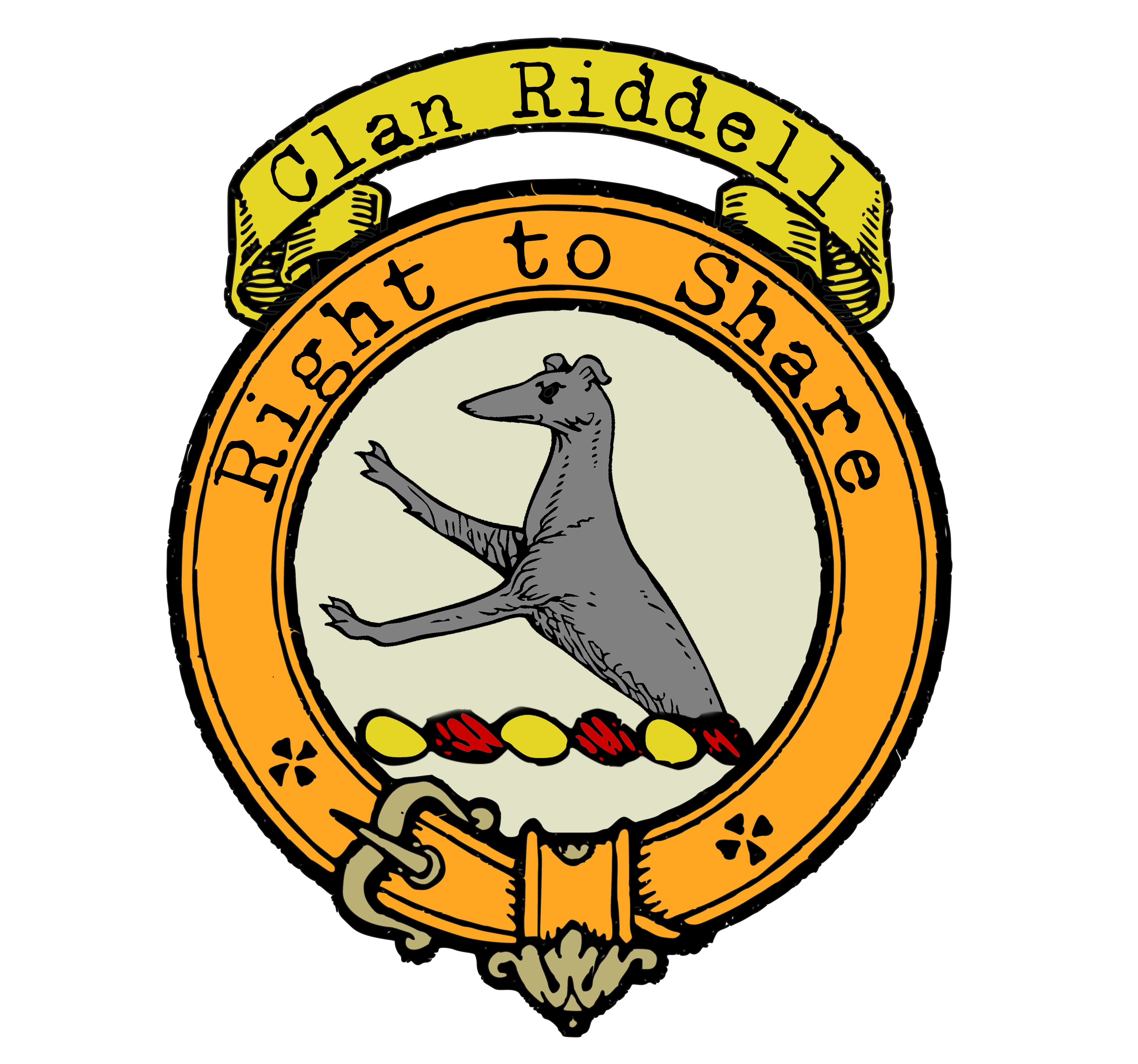Clan Riddell Crest
|
|
CREST: A demi greyhound Proper MOTTO: I hope to share TRANSLATION: N/A VARIATIONS: N/A |
| The origins of Clan Riddell are shrouded in mystery, with some theories suggesting a connection to Gascony, France, while others point to Norman roots. However, it is widely believed that the clan’s name has Norman origins.
One of the earliest mentions of the Riddell name dates back to 1116 when Gervase Ridale witnessed a charter of David I. This historical evidence indicates the presence of the Riddell family in Scotland during the 12th century. |
|
 |
|
| Purchase @ Redbubble Purchase @ Amazon.com Purchase @ Amazon.co.uk |
|
| The Riddell family’s influence grew as they acquired significant lands in Scotland. Walter, the son of Gervase Ridale, received a charter for the lands of Lillesleaf in Roxburghshire. Additionally, the Riddells acquired the Swinburn lands in Northumberland, which were later elevated to the status of a barony.
In 1296, Sir William Riddell of Riddell swore fealty to Edward I of England, as recorded in the Ragman Roll, highlighting the family’s involvement in the political and social affairs of the time. The Riddell family earned several noble titles over the centuries. Sir John Riddel was created a Baronet of Nova Scotia in 1628, marking a significant milestone in the clan’s history. His lands were established as the barony and regality of New Riddell. Another branch of the Riddell family, represented by Sir James Riddell, received a baronetcy in 1778, earning the title of Baronet of Ardamurchan. This branch had notable achievements, with Sir James being a superintendent general to the Society of British Fishery and a Fellow of the Society of Arts and Sciences. The Riddell family produced several prominent individuals throughout its history. Sir John Buchanan Riddell, Member of Parliament for Selkirk, married the eldest daughter of the Earl of Romney in 1805, further solidifying the family’s place in Scottish society. John Riddel, a 17th-century Edinburgh merchant, played a pivotal role in accumulating wealth through trade across the Baltic, particularly with Poland. He was also known for his friendship with General Monck and his efforts to persuade the general to restore the ancient parish church of South Leith. The Riddell family’s influence extended to the acquisition of the Ardnamurchan and Sunart estate in Argyll. Sir James Riddell, the first Baronet of Ardamurchan, received this title in 1778. However, the baronetcy eventually became extinct upon the death of Sir Rodney Riddell in 1907. In 1920, Sir George Riddell of Duns, a prominent newspaper proprietor, was raised to the peerage as Baron Riddell. His involvement in the Versailles peace conference of 1919 demonstrated the family’s continued engagement in significant historical events. |
|
Citations:
|
|
